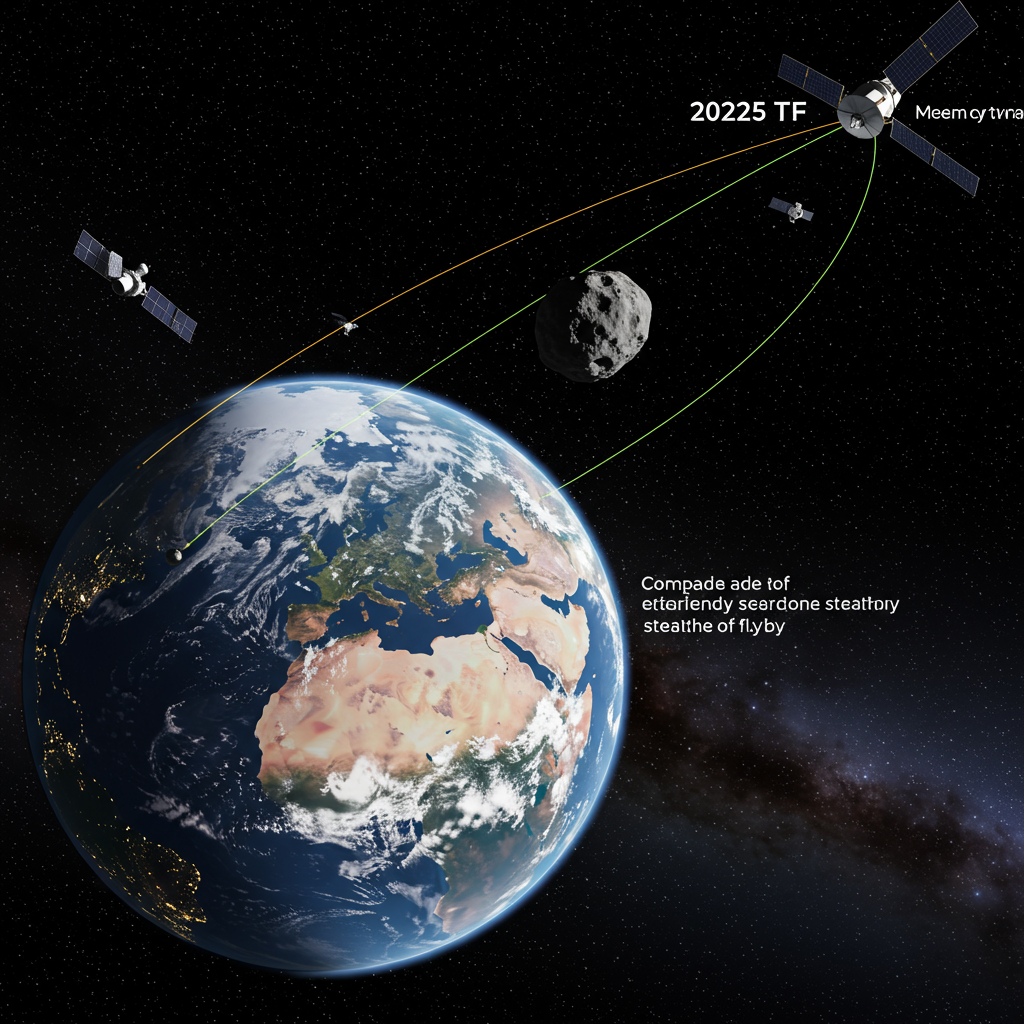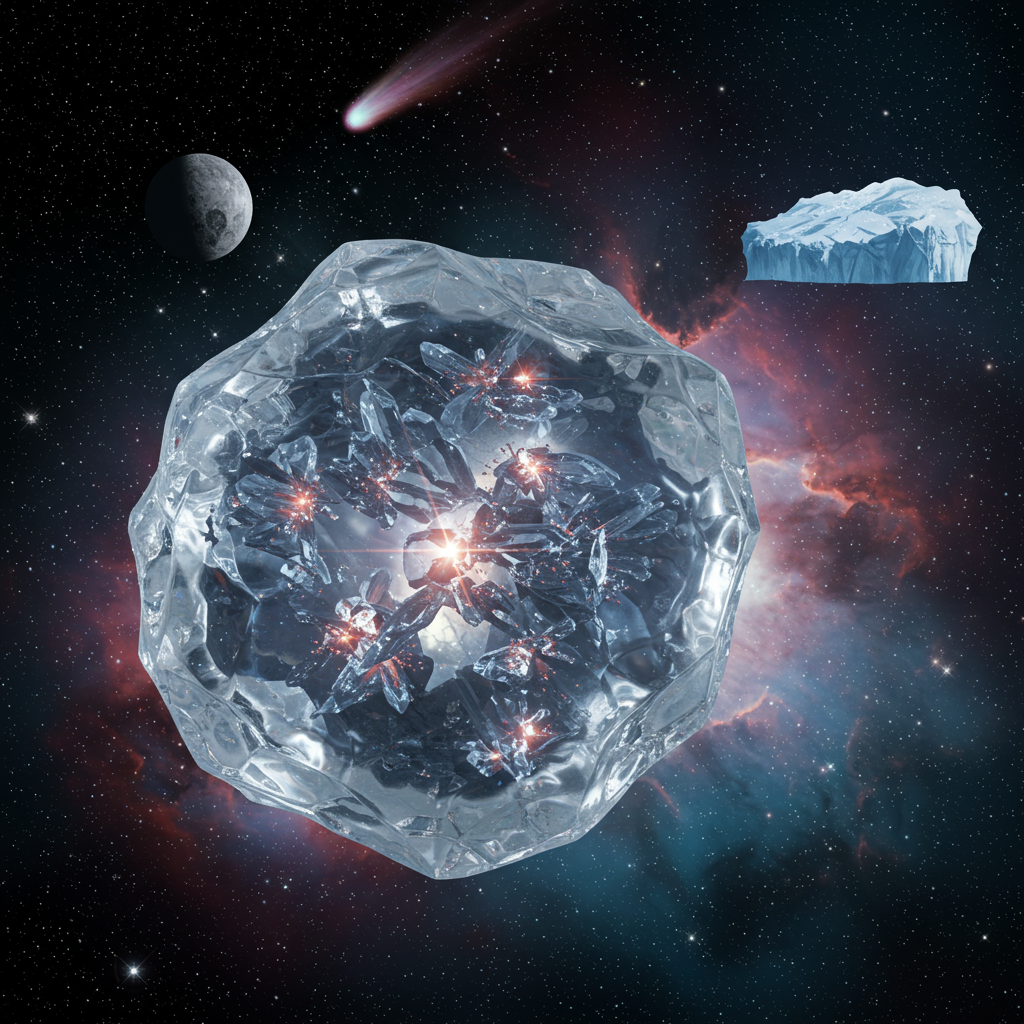A small asteroid recently made an astonishingly close pass by Earth, soaring nearer than some of our orbiting satellites, yet it remained undetected by astronomers until hours after its closest approach. This unexpected visitor, now officially designated 2025 TF, has highlighted both the incredible precision of celestial mechanics and the ongoing challenges in tracking every object in our cosmic neighborhood. Despite its stealthy nature, experts confirmed the space rock posed no threat, likely disintegrating if it had entered Earth’s atmosphere.
The Unseen Visitor: Asteroid 2025 TF’s Close Encounter
On Tuesday, September 30 (or Wednesday, October 1, GMT), a remarkable celestial event unfolded largely unnoticed in real-time. Asteroid 2025 TF, described as being roughly the size of a giraffe or a couch—estimated between 3.3 to 9.8 feet (1 to 3 meters) wide—zipped past Earth. Its trajectory took it just 265 miles (428 kilometers) above Earth’s surface, specifically over Antarctica. This altitude is comparable to where the International Space Station (ISS) typically orbits, making the flyby exceptionally close. Data later released by the European Space Agency (ESA) detailed the near-miss.
Astronomers initially spotted this “stealthy” asteroid hours after its closest approach. The NASA-funded Catalina Sky Survey was instrumental in its discovery. Subsequent observations from the Minor Planet Center, confirmed by several space observatories, quickly updated its status. This delayed detection underscores the complexities of monitoring the vast expanse of space.
Why Was Asteroid 2025 TF Discovered So Late?
The primary reason Asteroid 2025 TF evaded immediate detection lies in its diminutive size. Current telescope networks are optimized to track larger, more potentially hazardous objects. Small space rocks like 2025 TF are inherently difficult to spot, especially if they approach from a direction where ground-based telescopes have limited visibility or if their faint light is obscured.
Furthermore, its close proximity over Antarctica meant it was in an area less frequently observed by the world’s major asteroid-hunting telescopes. This specific event showcases how even with advanced technology, our planetary defense systems face a monumental task in cataloging every single piece of cosmic debris.
Understanding Asteroid Threats and Planetary Defense
While 2025 TF presented no danger, its close passage naturally raises questions about asteroid threats. Space agencies like NASA and ESA maintain vigilant watch over thousands of Near-Earth Objects (NEOs). Their primary mission is to identify and track objects that could pose a significant collision risk to our planet.
For an asteroid to be considered “potentially hazardous,” it must meet specific criteria. It needs to measure at least 460 feet (140 meters) in diameter. Additionally, its orbit must bring it within 4.65 million miles (7.48 million kilometers) of Earth. This distance is roughly 20 times the average separation between Earth and the Moon. Asteroid 2025 TF, being much smaller, fell far short of these criteria. This distinction is crucial for understanding the scale of threats space agencies prioritize.
The Role of Global Surveillance in Space Safety
The late detection of 2025 TF, while a learning opportunity, also highlights the improving capabilities of asteroid monitoring. Even though it was spotted post-flyby, the fact that such a small object can now be identified and tracked demonstrates advancements in space surveillance. NASA’s Jet Propulsion Laboratory (JPL) and its Center for Near-Earth Object Studies (CNEOS) continuously refine their methods. They are building an increasingly comprehensive catalog of NEOs, enhancing our understanding of orbital dynamics and potential risks.
Fortunately, no known objects currently pose a significant threat to Earth for at least the next 100 years. This long-term outlook provides a comforting perspective, although agencies continue to invest in technologies like NASA’s DART mission, which successfully demonstrated asteroid deflection capabilities. Such missions are vital for future planetary defense strategies.
Impact on Spacecraft and Future Outlook
A key concern during such close flybys is the safety of orbiting infrastructure. Asteroid 2025 TF’s path brought it to an altitude similar to the ISS. Fortunately, during its swift journey, no spacecraft were in its immediate path. Even small objects, traveling at immense speeds, could cause considerable damage to satellites or space stations upon impact. This scenario underscores the need for enhanced real-time tracking of smaller objects, not just for planetary defense but also for safeguarding our assets in Earth orbit.
The tiny space rock 2025 TF is not expected to make another close approach to our planet until April 2087, according to NASA. This long interval provides ample time for improved detection technologies and orbital modeling.
Beyond Asteroids: Other Celestial Spectacles
While asteroids present a distinct focus for space agencies, our skies frequently offer other dazzling events. Around the same time as 2025 TF’s flyby, skywatchers anticipated the Draconid meteor shower, which peaked on Wednesday, October 8. This annual display of “shooting stars” originates from icy debris left by Comet 21P/Giacobini-Zinner, not asteroids. Although the light of a full Harvest Moon somewhat dampened the viewing, bright fireball meteors were still a possibility. Other celestial events, like potential intense Northern Lights displays and opportunities to spot comets like C/2025 A6 (Lemmon) and C/2025 R2 (SWAN R2), further enrich our ongoing fascination with the cosmos. These events, while different in origin and impact from asteroid flybys, collectively remind us of the dynamic nature of our solar system.
Frequently Asked Questions
What is Asteroid 2025 TF and how close did it come to Earth?
Asteroid 2025 TF is a small space rock, estimated to be between 3.3 to 9.8 feet (1 to 3 meters) wide, roughly the size of a giraffe or a couch. On September 30 (or October 1 GMT), it made an exceptionally close approach to Earth, passing just 265 miles (428 kilometers) above Antarctica. This altitude is comparable to that of the International Space Station, making it one of the closest asteroid flybys detected.
Why wasn’t Asteroid 2025 TF detected before its close flyby?
The primary reason for its late detection was its small size. Current asteroid detection systems are optimized for larger, potentially hazardous objects, making tiny space rocks like 2025 TF difficult to spot, especially if they approach from blind spots in telescopic coverage or are too dim. Astronomers, notably from the Catalina Sky Survey, discovered it only hours after its closest pass, confirming the ongoing challenge of real-time comprehensive space surveillance.
Do small asteroid flybys like 2025 TF pose a significant threat to Earth or satellites?
No, small asteroid flybys such as 2025 TF generally do not pose a significant threat to Earth. An asteroid of its size would most likely burn up as a bright fireball if it entered Earth’s atmosphere, disintegrating harmlessly. However, objects passing at such low altitudes do present a potential, albeit small, risk to orbiting spacecraft like satellites or the ISS, as even tiny, fast-moving debris can cause serious damage. Fortunately, no spacecraft were in its path during this particular event.
Conclusion
The stealthy flyby of Asteroid 2025 TF serves as a compelling reminder of the constant, dynamic activity in our solar system. While this small space rock posed no direct threat to Earth, its late detection underscores the continuous need for advanced space surveillance and planetary defense initiatives. Agencies like NASA and ESA are tirelessly working to refine their tracking capabilities, ensuring we are as prepared as possible for future cosmic encounters. By staying informed about these fascinating events, we gain a deeper appreciation for the complex dance of celestial bodies that shape our universe.




